
ABOUT
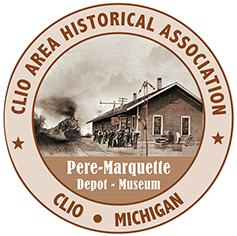
CLIO'S HISTORICAL PEOPLE & PLACES
Clio's beginning was almost by accident. Until the building and completion of the Flint and Pere-Marquette Railway in 1861, Clio's history was comparatively uneventful. Pine forests occupied a portion of its site, and hundreds of acres of the same valuable timber were standing in its immediate vicinity, but the stupid cupidity which actuated one or two men in or near the old village of Pine Run during the building of the railways was Clio's opportunity, and this new avenue of commerce, which would have more fully developed and built up a neat little village, already an important trading and manufacturing point, was divided from its proposed route. Pine Run was given the go-by and the station of Clio established in its place.
Thus Clio, then known as Varney's or Varney, began to develop, as many other cities across the nation did in the late nineteenth century along the railroad tracks. The prosperity of Clio was then assured. A village was plotted, stores and manufacturing establishments sprung into existence, lumbering became an important interest, and the new village rapidly increased in numbers. By the early 1900s the Village of Clio, with its population of 800 industrious citizens, a new school, mill pond, wide streets, small industries, and various merchandise establishments had become a very picturesque little hamlet snuggled on high ground between the creek and the railroad.
About 1864 a certain Colonel Hill named the town "Clio."
This name comes from a Greek goddess, the daughter of Jupiter.
FLINT & PERE-MARQUETTE RAILROAD
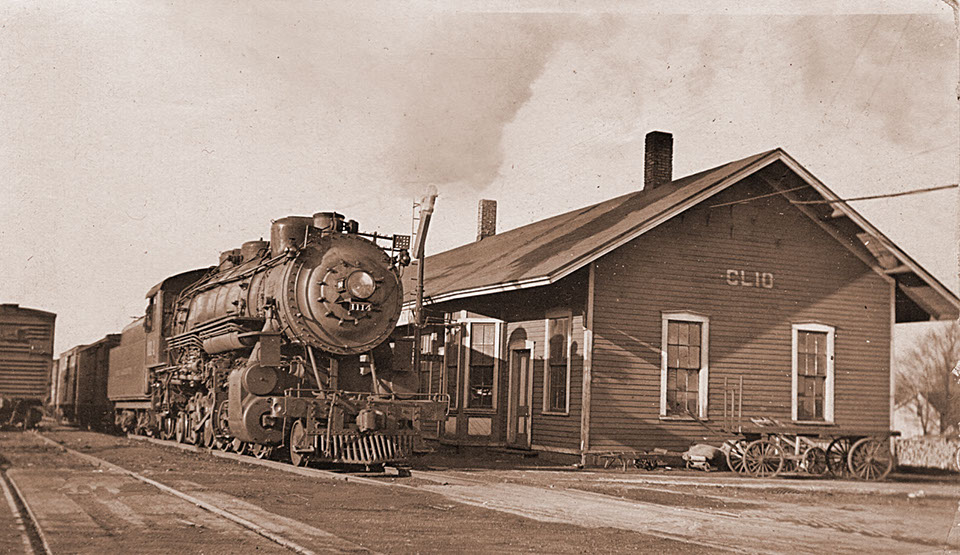
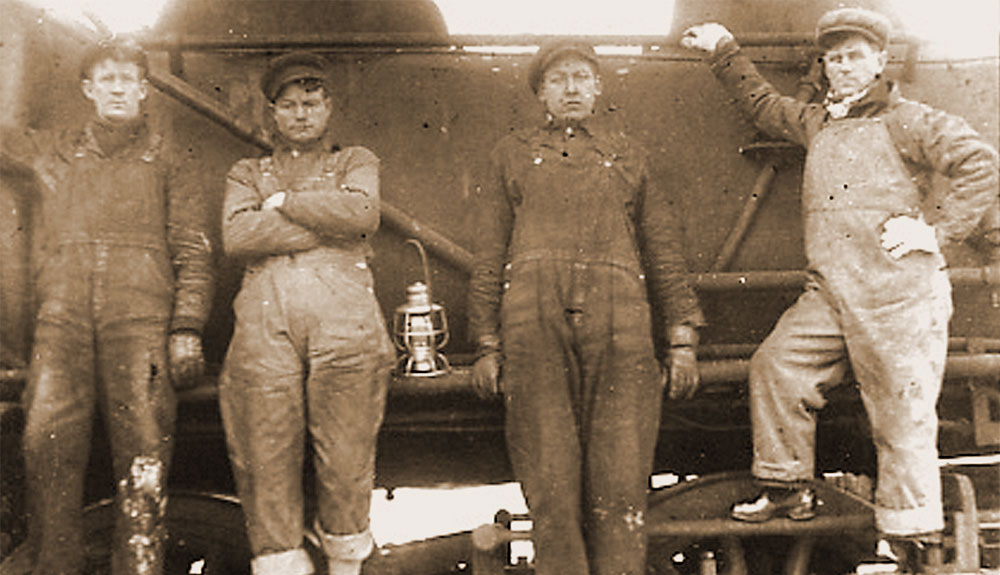
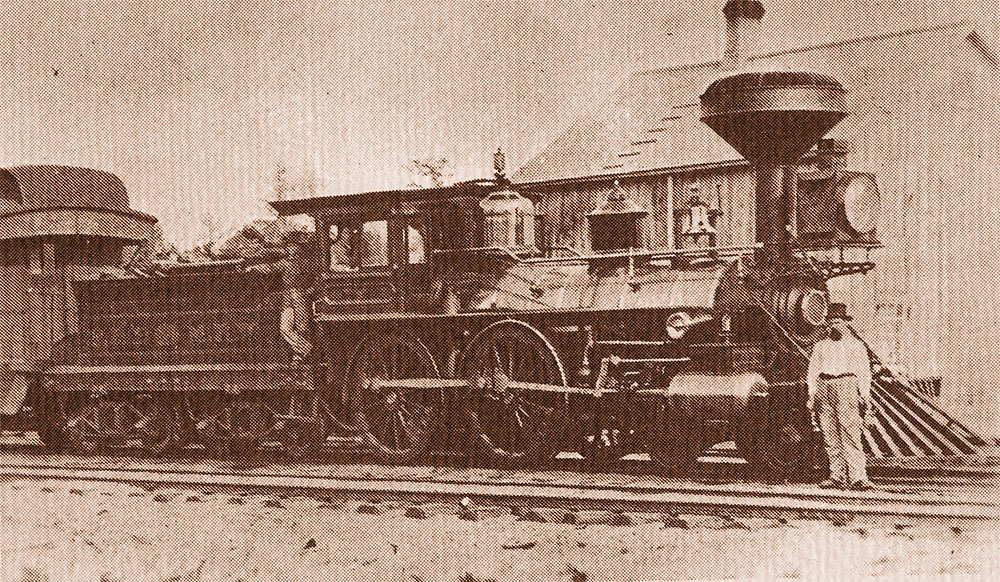
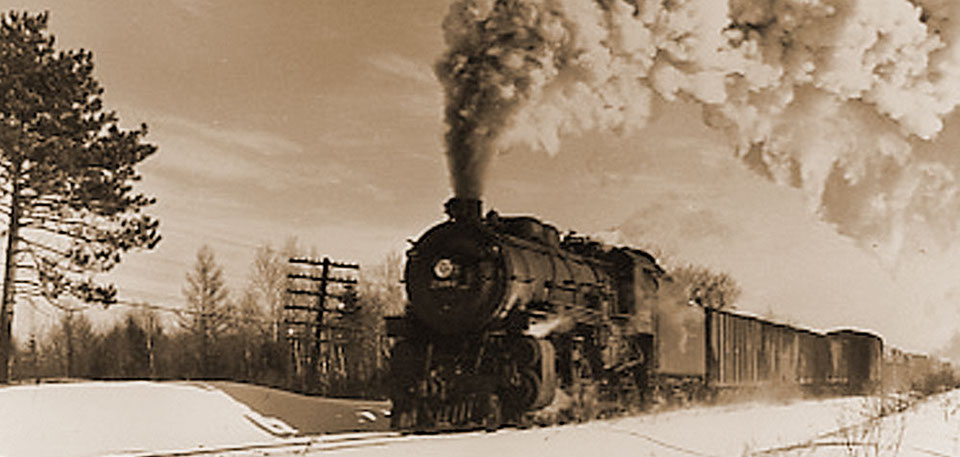
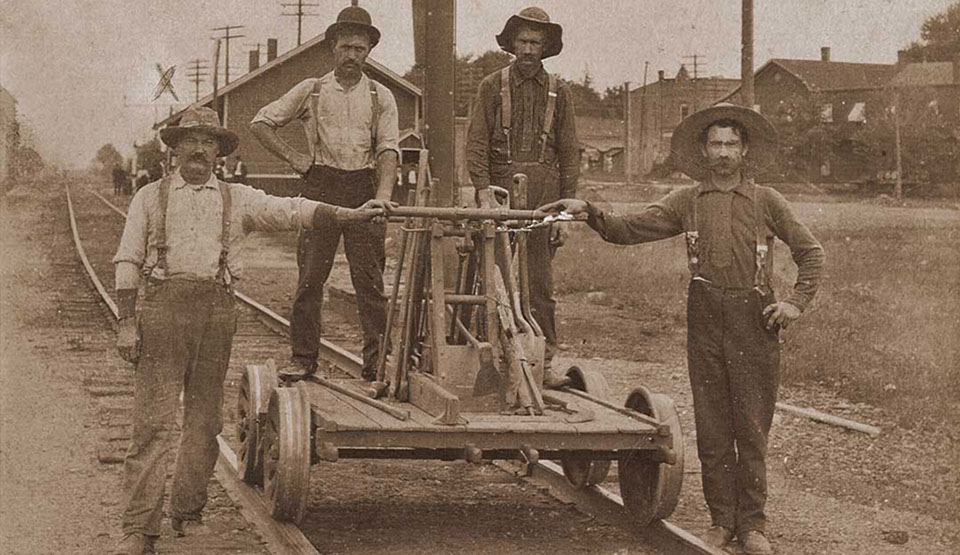
Clio Depot in 1946
Picking up another load
Pere-Marquette crew
The service men who kept the engines running
The Pollywog Engine
This was the first engine used by the Pere-Marquette Railroad to serve Clio in 1859
Steam through the snow and cold
The last steam engine to stop at Clio depot in 1943
Handcar Crew
Working at Clio Depot - Early 1900's
The first engine used on the railroad in Clio was called the "Pollywog". It was a small second-hand machine purchased for two thousand dollars.
The Flint & Pere-Marquette railroad was probably the most important single factor in the development of Clio's identity as a town. If it had not been for the tracks bypassing Pine Run to a mile west of it, Clio most likely would not even exist today. The company which was first called the Flint & Pere-Marquette Railway Company was reorganized in 1881 under the name of the Flint & Pere-Marquette Railroad Company.
The first train consisted of the engine, one baggage car and one coach for passengers. The time occupied in making the run of 26 miles from Saginaw to Mt. Morris was four hours. The receipts collected for the first week was $102.52. The company which was first called the Flint & Pere-Marquette Railway Company was reorganized in 1881 under the name of the Flint & Pere-Marquette Railroad Company.
To read the details of the Clio Depot and the Pere-Marquette Railroad, you can review the booklet titled, CLIO AREA CENTENNIAL published in 1973, located in the museum.

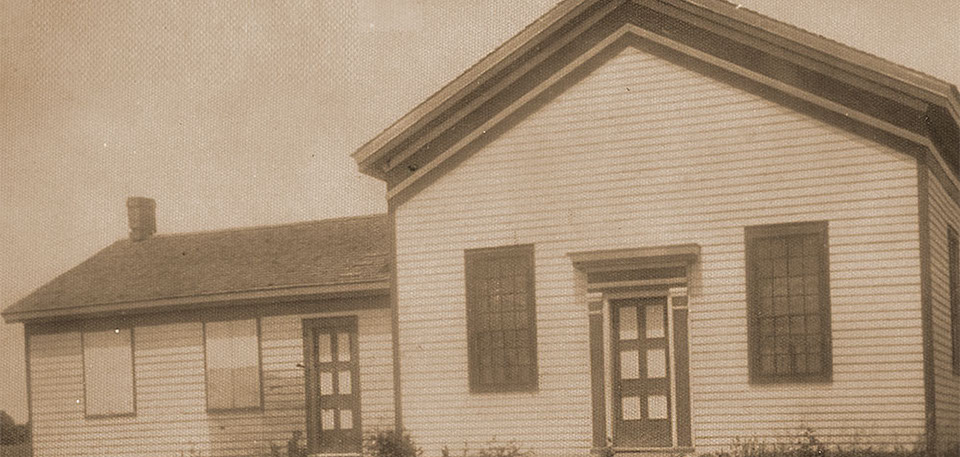
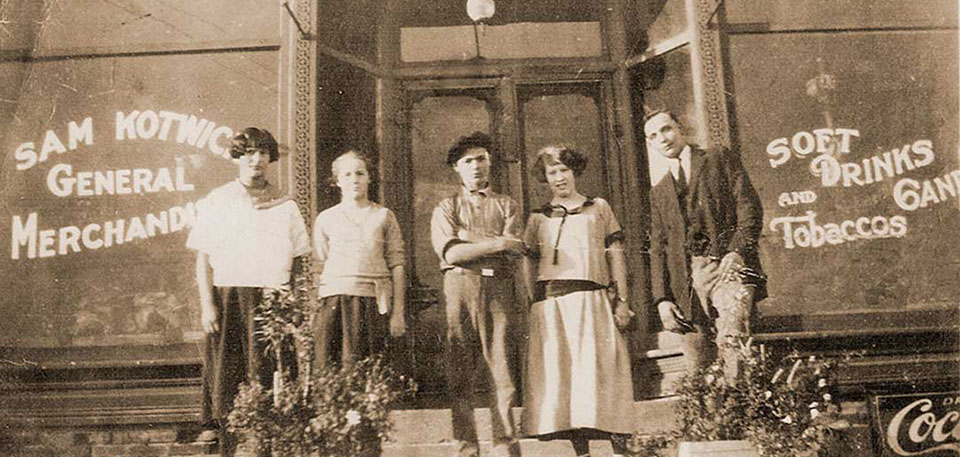
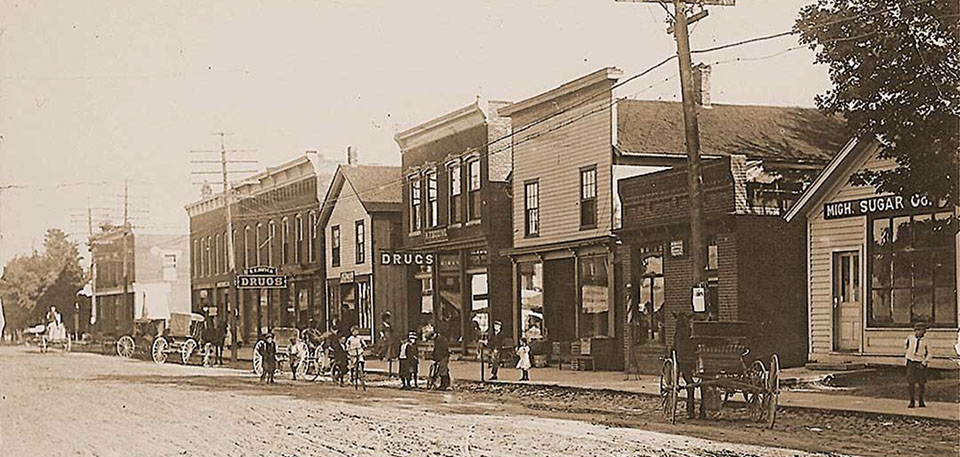
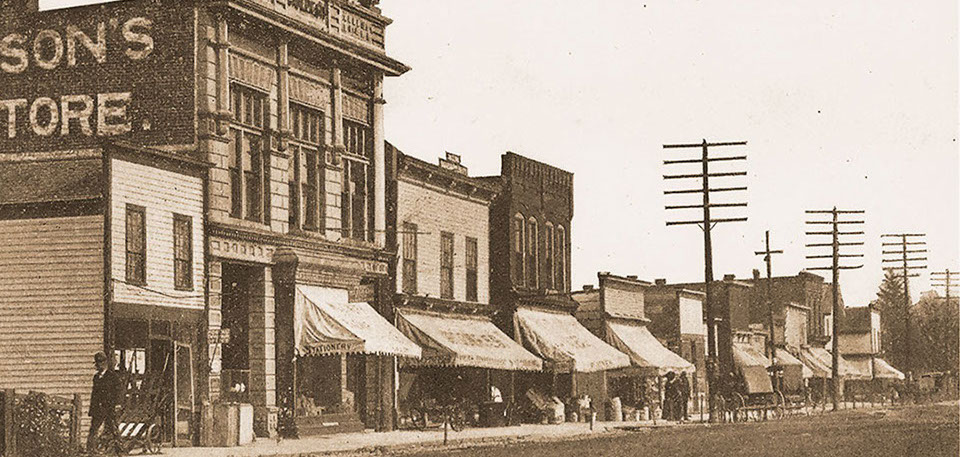

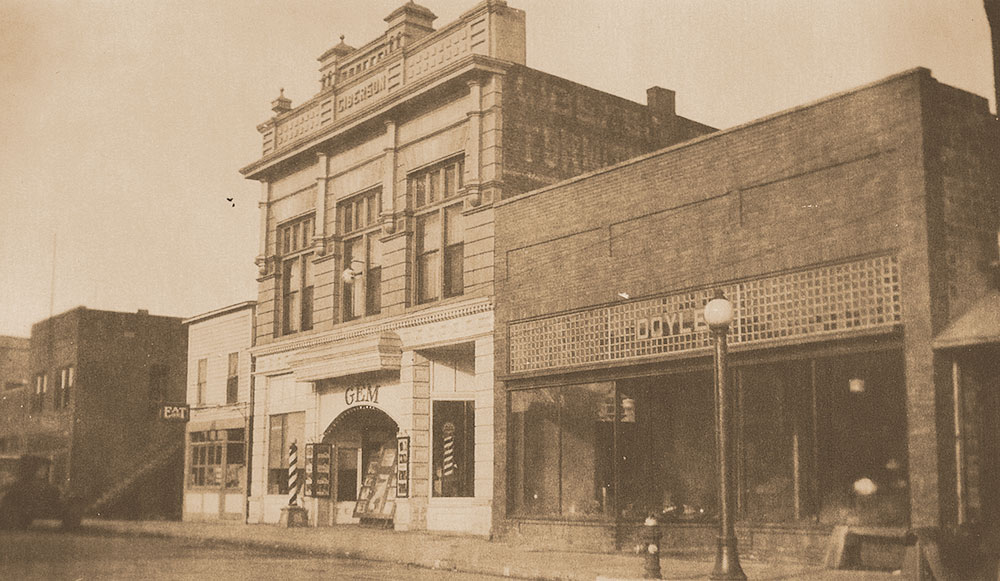
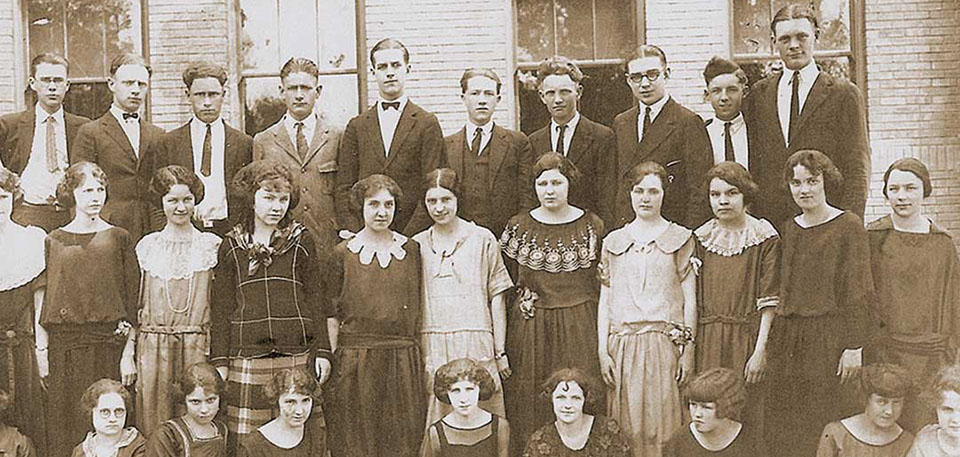
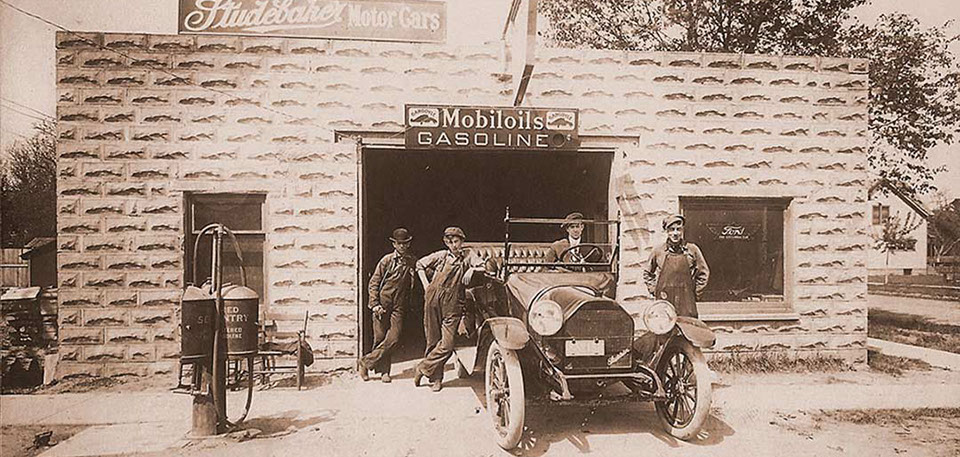
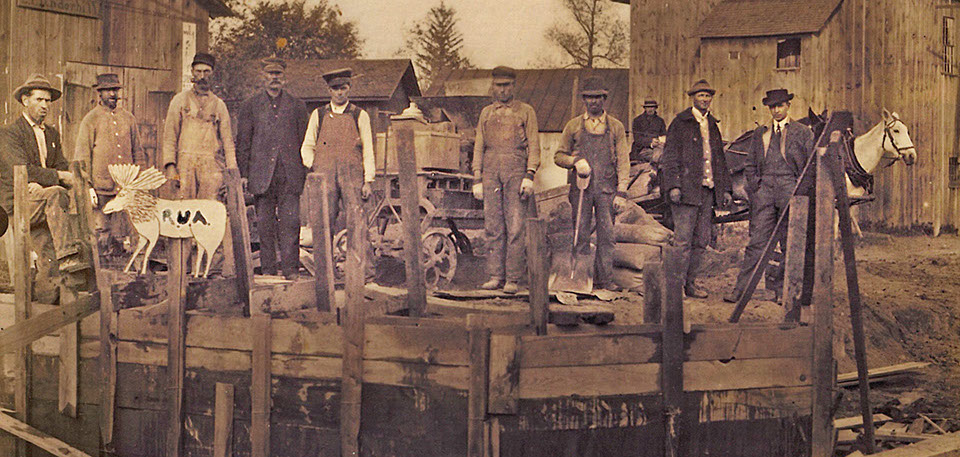
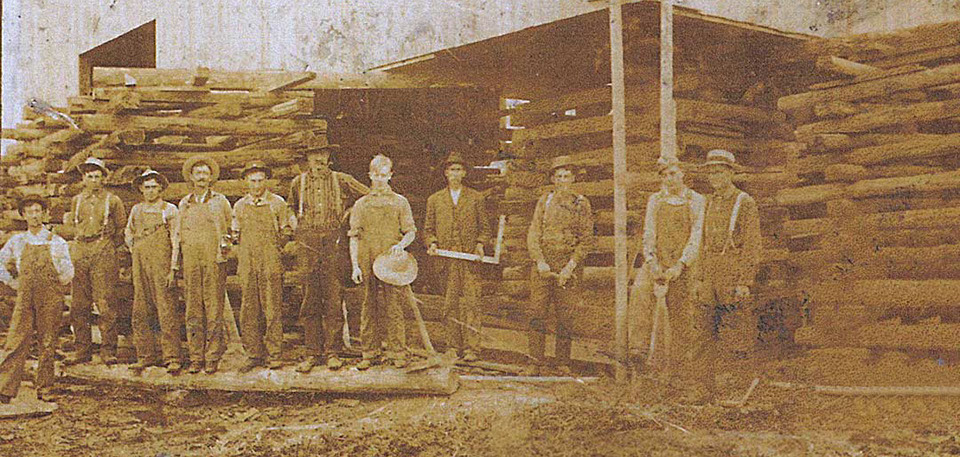
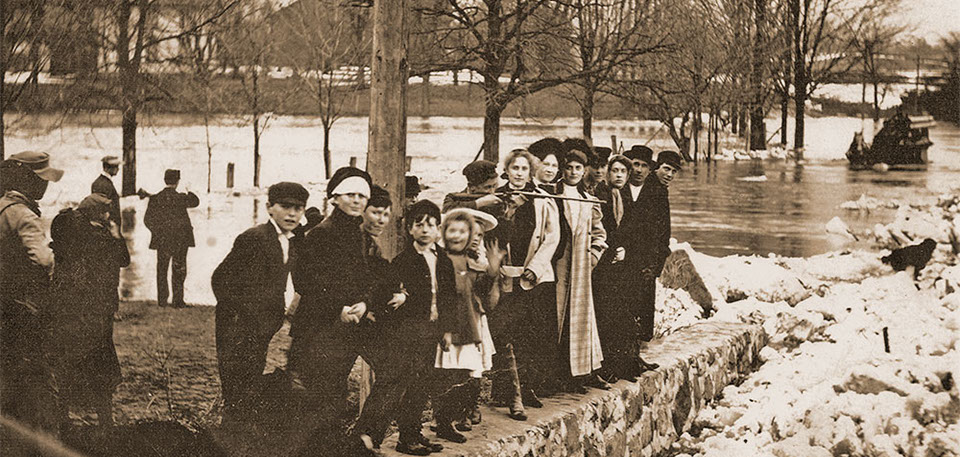
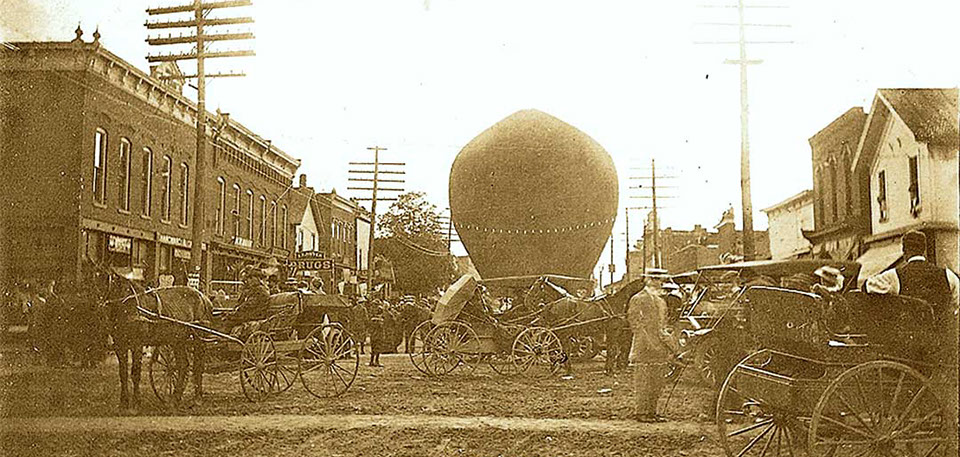
McCrady & Miller Ford Dealership
The Ford Gas Station and Service Center
Pine Run School Site - 1856
The first school house in the Pine Run and Clio area
Sam Kotwick Store around 1925
Sam and sales staff are open for business
Clio downtown - 1910
South side of Vienna Road
Clio downtown around 1910
North side of Vienna Road
Clio July 4th Celebration - 1944
Clio folks never missed a chance for a great parade
Clio Downtown District - 1917-1924
Doyle, GEM and other stores in downtown Clio
Clio High School Class of 1923-1924
Seniors posing for their Senior Class Photo
Clio Studebaker Motor Sales & Gas Station - 1917
Auto Sales & Service Station
Clio dock workers - 1898
Workers down by the river take a break for photograph
Lumber Yard workers in late 1890s
Workers pause for photograph while working in the lumber yard
Flooded creek - 1913
Everyone's out when the creek flooded and workers struggle to get logs across
Clio Homecoming Celebration - 1912
Everyone's enjoying the August Homecoming Celebration
This site is provided by the Clio Area Historical Association, Clio, Michigan 48420
Special thanks to Gil Davenport and Quality Pool Supply for creating our website.
The purpose for this site is to share the unique beginnings of our community with all those who are lovers of history.
Much of the information was provided by Eben Reed and his personal research of Clio's past.
© Clio Area Historical Association | Clio Depot & Museum 2017 | Developed by Gibby Media | Gibbym.com